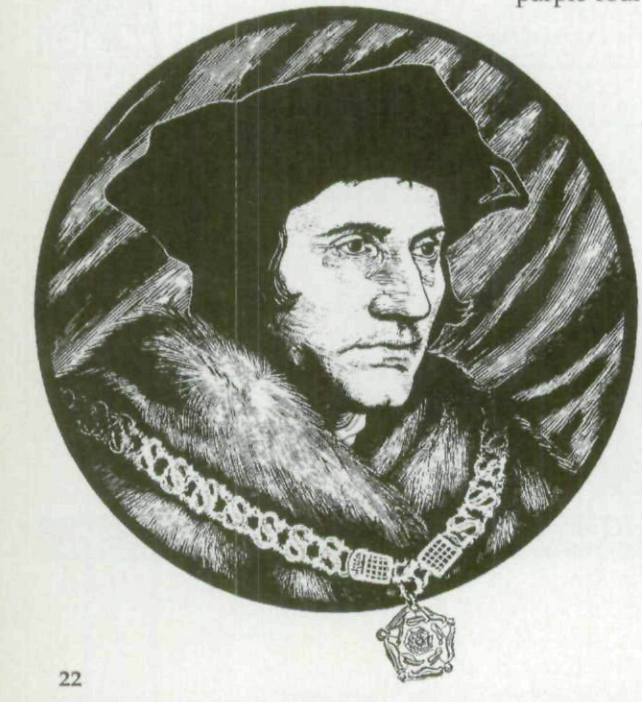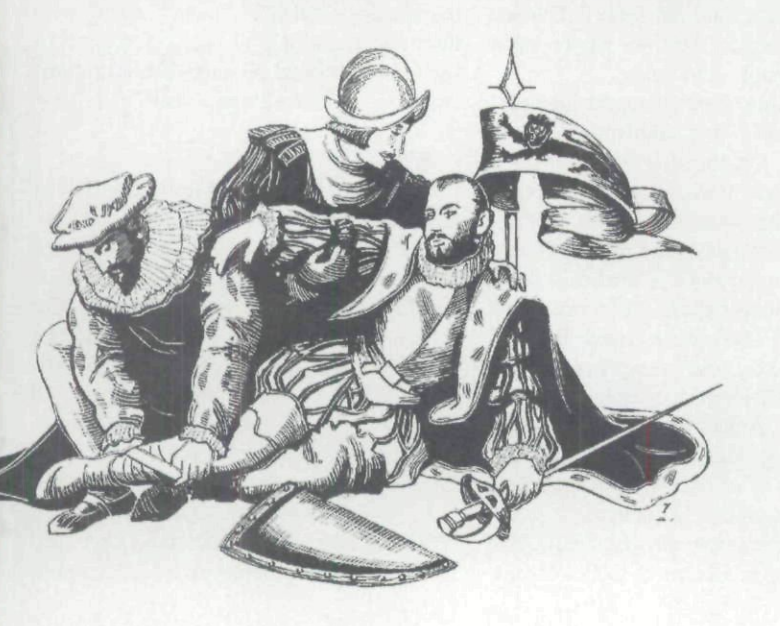For five decades—from his discharge from the U.S. Army until his death in 1995— John Hapgood was a prolific illustrator for America. He also did illustrations for other magazines like The New Yorker and department stores like Lord & Taylor and Bloomingdale’s. Far more notable, however, was the job he performed during the Second World War.
Hapgood served in the war in the “Ghost Army,” a unit dedicated to deception and trickery that ran 21 different ersatz military campaigns between D-Day and the surrender of Germany in May 1945. The unit’s specialty was using fake equipment—inflatable tanks and planes, loud recordings of military vehicles on the move, cloth and tar-paper barracks—and other means of deceit to fool German forces into attacking at the wrong place or wrong time. Many of its members were artists before they entered the service, and a few became prominent illustrators and designers in civilian life after the war.
Though the “Ghost Army” consisted of a little more than 1,000 troops, they could mimic the movements and deployment of a force 30 times larger. Part of their specialty was imperfect camouflage: inflating hundreds of fake tanks and other vehicles but then leaving them partially visible to German aircraft while the true attacking force remained carefully hidden.
 Among their feats was the construction of a fake harbor at Normandy in the weeks after D-Day to deceive German artillery and, later in the war, assisting in a major crossing of the Rhine River where the ostentatious preparations of “Ghost Army” troops tricked the opposing German forces into defending the wrong position as Allied troops crossed the river elsewhere.
Among their feats was the construction of a fake harbor at Normandy in the weeks after D-Day to deceive German artillery and, later in the war, assisting in a major crossing of the Rhine River where the ostentatious preparations of “Ghost Army” troops tricked the opposing German forces into defending the wrong position as Allied troops crossed the river elsewhere.
The U.S. military did not acknowledge the existence of the “Ghost Army,” the 23rd Headquarters Special Troops (also known as the “Instant Army”) for more than 50 years—presumably because they planned to use them again if the Soviets invaded Western Europe during the Cold War—but the group was finally recognized in 1996. In 2022, the surviving members were awarded the Congressional Gold Medal. “The soldiers recruited for the Ghost Army were not only men of muscle, they were also men of the mind,” said Senator Edward Markey of Massachusetts in a 2024 ceremony honoring the survivors. “They were creative, original thinkers who used engineering, art, architecture and advertising to wage battle with the enemy. Their weapons were unconventional, but their patriotism was unquestionable.”
John Hapgood was born in 1905 in Worcester, Mass., and attended high school and college in Rochester, getting a degree in illustration from the Rochester Institute of Technology in 1926. He moved to New York in 1938 and began to work as a commercial illustrator out of a midtown studio. (A close neighbor was Katharine Hepburn, with whom he often went to the movies.) His drawings were almost always black-and-white and sketched in incredible detail; Hapgood was known to draw with a magnifying glass in one hand for particularly intricate illustrations.
 After the war, Hapgood returned to his New York work, though he summered for the rest of his life on Block Island in a house he bought from a fellow G.I. and called “Hap-Hazard.”
After the war, Hapgood returned to his New York work, though he summered for the rest of his life on Block Island in a house he bought from a fellow G.I. and called “Hap-Hazard.”
At America, Hapgood was remembered for his decades of careful, spiritually informed drawings for the magazine from 1956 until 1993, two years before his death. A lifelong baseball fan, Hapgood nevertheless loved to draw saints and the Virgin Mary as much as he loved drawing baseball players. He could add a quixotic or playful sketch to liven up many a dense 5,000-word theological treatise. Many of his original covers for the magazine are framed in the offices of America.
“He was able to portray the poor and oppressed as persons with inalienable human dignity, and the great were shown with their greatness intact,” wrote associate editor Dennis M. Linehan, S.J., in a 1995 article for America. “[T]here was a mystical quality to his own prayer. Indeed, his last artistic project was a series of angels to accompany a videotape, a slightly anachronistic undertaking typical of his spiritual attitude.”
“There is a photograph of John Hapgood in the editorial board room at America House. At his death, we found the original in an envelope with a purple four cent stamp and the date April 1960,” wrote Father Linehan in 1995. “John is standing on Fifth Avenue, only a few steps from his studio, with the statue of Atlas in the background. He is gazing toward St. Patrick’s Cathedral and its spires—heavenward from a rooted stance. Such was his life.”
•••
Our poetry selection for this week is our “Spring poetry roundup: Mini catechisms in verse.” Readers can view all of America’s published poems here.
Also, news from the Catholic Book Club: We have a new selection! We are reading Norwegian novelist and 2023 Nobel Prize winner Jon Fosse’s multi-volume work Septology. Click here to buy the book, and click here to sign up for our Facebook discussion group.
In this space every week, America features reviews of and literary commentary on one particular writer or group of writers (both new and old; our archives span more than a century), as well as poetry and other offerings from America Media. We hope this will give us a chance to provide you with more in-depth coverage of our literary offerings. It also allows us to alert digital subscribers to some of our online content that doesn’t make it into our newsletters.
Other Catholic Book Club columns:
- The spiritual depths of Toni Morrison
- What’s all the fuss about Teilhard de Chardin?
- Moira Walsh and the art of a brutal movie review
- Father Hootie McCown: Flannery O’Connor’s Jesuit bestie and spiritual advisor
- Who’s in hell? Hans Urs von Balthasar had thoughts.
Happy reading!
James T. Keane








